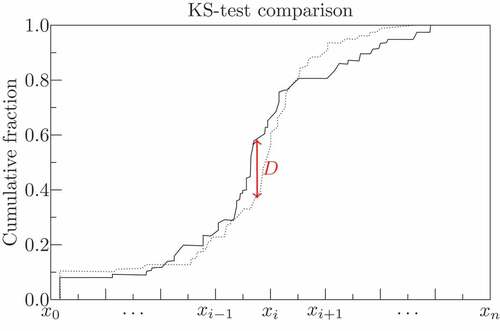Figures & data
Table 1. Brief summary of the models that are available in BISON.
Figure 1. Sobol’ indices of six input parameters for a variety of inert gases in the open gap configuration with a (a) non-zero and (b) zero temperature jump distance. The larger the sensitivity indices, the more critical the parameters are for .
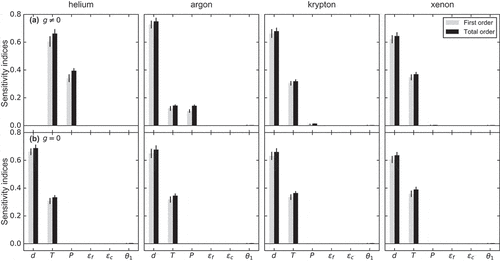
Figure 2. Sobol’ indices of six input parameters for a variety of inert gases in the open gap configuration with a (a) non-zero and (b) zero temperature jump distance. The larger the sensitivity indices, the more critical the parameters are for .

Figure 3. Sobol’ indices of eight input parameters for a variety of inert gases in the closed gap configuration. The larger the sensitivity indices, the more critical the parameters are for .

Table 2. Problem setup for the sensitivity analysis for both open and closed gap configurations. Three representative cases are considered to study the effects of input parameters on the gap conductance (1) for a larger gap thickness as compared to the sum of surface roughnesses in the open gap; (2) for a gap thickness which is in the order of the sum of surface roughnesses in the open gap, which is also representative for a closed gap with negligible load-to-hardness ratio; and (3) for a non-zero gap thickness with a non-negligible load-to-hardness ratio in the closed gap.
Table 3. Overview of the fuel centerline temperature experimental data for BISON integral effects validation.
Figure 4. BOL measured vs. predicted fuel centerline temperature for fuel rods in IFA-431, IFA-432, and IFA-515.10 using (a) EquationEquation (2)(2)
(2) with the default modeling options in , denoted by PRIOR and (b) EquationEquation (5)
(5)
(5) with the new modeling options in , denoted by PRESENT (LTC = lower thermocouple measurement; UTC = upper thermocouple measurement; M = measured; P = predicted).
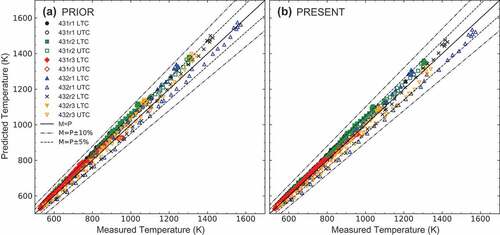
Table 4. The BOL validation metrics for the fuel centerline temperature predictions ().
Figure 5. The average linear heat rate histories for (a) the Halden IFA-515.10 irradiation and (b) the Halden IFA-562 irradiation.

Figure 6. Measured fuel centerline temperatures against the BISON predictions for IFA-515.10 Rod A1, IFA-562.2 Rod 15, IFA-562.2 Rod 16, and IFA-562.2 Rod 17 at four different burnup ranges using (a) EquationEquation (2)(2)
(2) with the default modeling options in (PRIOR) and (b) EquationEquation (5)
(5)
(5) with the new modeling options in (PRESENT). The selected rods are irradiated to high burnups; 75.5GWd/t UO
for IFA-515.10 Rod A1 and approximately 49.4GWd/t UO
for IFA-562.2 rods (M = measured; P = predicted). Four different burnup ranges are considered: (1) 0
Bu
20, (2) 20
Bu
40, (3) 40
Bu
60, and (4) Bu
60 GWd/t UO
.
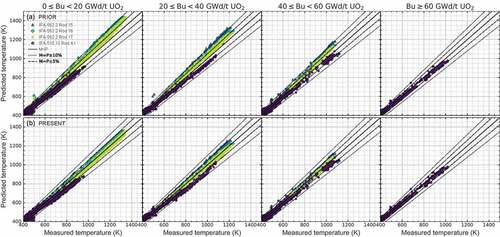
Table 5. The through-life validation metrics for the fuel centerline temperature predictions (Figure 6).
Figure 7. KS-test comparison: cumulative fraction plot of the fuel centerline temperature predictions for IFA-515 Rod A1 and IFA-562.2 Rod 15/16/17. The KS statistics are provided on the plot; KS statistic, – the largest vertical difference between the CDFs of the two samples – and
-value. Note that the value of the KS test statistics are not affected by scale changes such as using a log-scale as the test is robust and takes into account only the relative distribution of the data.
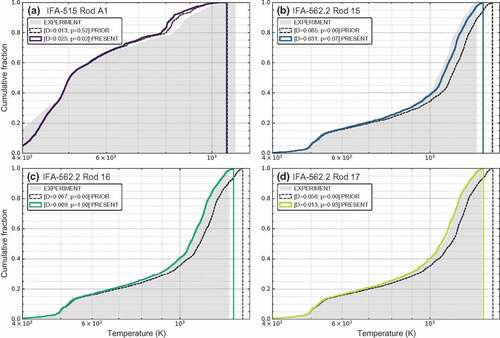
Figure 8. The BISON predictions vs. Risø-3 AN3 measurements for (a) fuel centerline temperature, and (b) fission gas release using the ‘prior’ and ‘present’ options (Grey shaded areas represent a 5% change around the experimental data.). At EOL, the predicted fission gas release is 26.8% with the ‘prior’ option and 21.0% with the ‘present’ option. Meanwhile, the measured value is 38.3%.

Figure 9. The BISON predictions vs. Risø-3 AN4 measurements for (a) fuel centerline temperature, and (b) fission gas release using the ‘prior’ and ‘present’ options (Grey shaded areas represent a 5% change around the experimental data.). At EOL, the predicted fission gas release is 54.4% with the ‘prior’ option and 39.7% with the ‘present’ option. Meanwhile, the measured value is 43.0%.

Table
Table 6. Comparison of the largest real value that is indicated by the bold numerical value. The cubic equation is given by .
Figure 10. Schematic illustration of the Kolmogorov–Smirnov statistic (i.e., the largest vertical difference between the CDFs of the two samples). Note that -value indicates the statistical significance between the two samples.
